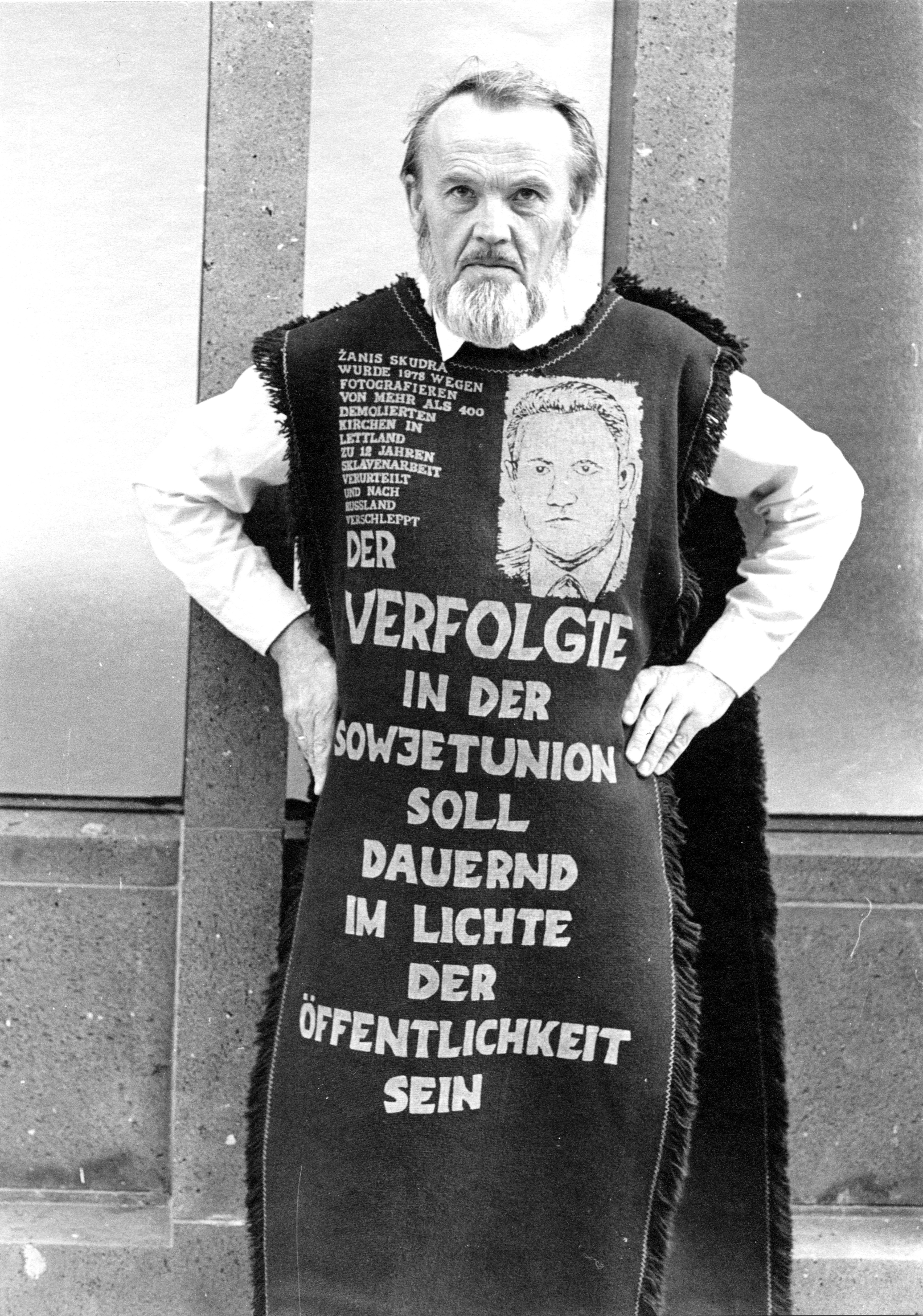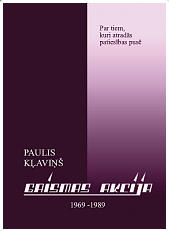The collection consists of artefacts donated to the Museum of the Occupation of Latvia by Paulis Kļaviņš in 2006, and by Ģederts Melngailis on several occasions, beginning in 1994. Paulis Kļaviņš (1928-2016) was a Latvian-born religious and political activist, who lived in the Federal Republic of Germany. He studied theology at Bonn University, and afterwards was active in the work of the Pentecostal Church. In 1968, Kļaviņš and his wife Zeltīte read the book ‘Tortured for Christ’ by Richard Wurmbrand, a Romanian pastor who had been persecuted by the communist regime in Romania, and they were deeply impressed by it. In 1969, Kļaviņš met Wurmbrand, and in 1970 he and his wife started to work for the Christian human rights organisation Hilfsaktion Märtyrer-Kirche (HMK), which was part of the International Christian Mission to the Communist World founded by Wurmbrand. His main activity was working for HMK’s radio station, which broadcast programmes in nine languages in cooperation with the Swedish Pentecostal Church’s IBRA-Radio. Kļaviņš prepared the programme ‘Klusuma balss’ (The Voice of Silence), which was broadcast once a week in Latvian. He worked for the radio until 1992, when he moved back to Latvia.
In parallel, Kļaviņš founded the organisation Gaismas akcija (‘Action of Light’). It was registered in the USA in 1977, and in West Germany in 1978. It had the same general aims as HMK, but it was aimed specifically at Latvia. The main aims of the organisation were: 1) to provide Christians in Latvia with religious literature and information about religious life in the West; 2) to inform Western society about religious persecution, repressions against religious and political dissidents, and life in Soviet Latvia in general; 3) to organise protest actions against the persecution of dissidents in the USSR, and in the Baltic Republics in particular. The organisation provided an opportunity for émigré Latvians, as well as non-Latvians in the West, to participate in Gaismas akcija in five possible ways: 1) as couriers taking money, literature (copied on microfilm), medicines for political prisoners, etc, on tourist trips to Latvia; 2) as social activists, advocates of the cause; 3) by participating in demonstrations and other street actions; 4) by writing letters to dissidents and political prisoners in Latvia, and protest letters to Soviet functionaries; 5) by providing regular or irregular donations to the organisation.
Initially, the task of finding people in Latvia who could be trusted was unwittingly facilitated by the Soviet authorities. In 1969, the Soviet Latvian Cultural Relations Committee, overseen by the KGB, invited Kļaviņš, as a well-known émigré religious activist, to visit Latvia. One of their aims was to show that religious life was flourishing. The second was to counter the hostile attitude of émigré Latvians towards the Soviet authorities, and also to divide them, as the official policy of the main émigré organisations was not to get involved in contact with Soviet Latvia. At the invitation of the Soviet authorities, Kļaviņš and his wife visited Riga in 1969, and established contacts with Baptists and Seventh Day Adventists, especially with the Brūvers family, who were already active in underground anti-Soviet activities. The Soviet authorities were dissatisfied, because during and after the visit, Kļaviņš continued to criticise Soviet policy on the Church. Thus, he was denied a visa to go to Riga again, but his wife and children could visit Latvia. The mission of courier was the most dangerous, as all foreigners were under constant surveillance by the KGB, so there were not many people involved in this activity; but nevertheless, there was a core of devoted people who were ready to take the risk. There were also Finnish and Estonian collaborators.
The ‘Action of Light’ was perhaps the most successful Western attempt to promote the cause of human rights in Soviet Latvia, although the attitude towards it in religious circles in Latvia was very different. Some people were critical of it, because they thought it could attract unnecessary attention from the KGB, and bring new repressions on believers. Indeed, in January 1983, the Latvian SSR arrested several people who were involved in it. Many more were searched and questioned. Although participation in the ‘Action of Light’ was not the main charge in many cases, Lidija Doroņina-Lasmane, Jānis Rožkalns and Ģederts Melngailis were tried in connection with it. Ģederts Melngailis was sentenced to compulsory treatment in a psychiatric hospital, in the special hospital of the Ministry of the Interior of the USSR in Blagoveshchensk. All of them were released in 1987.


